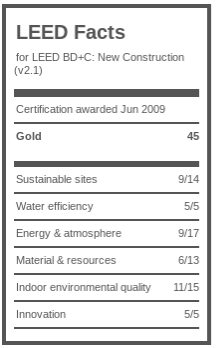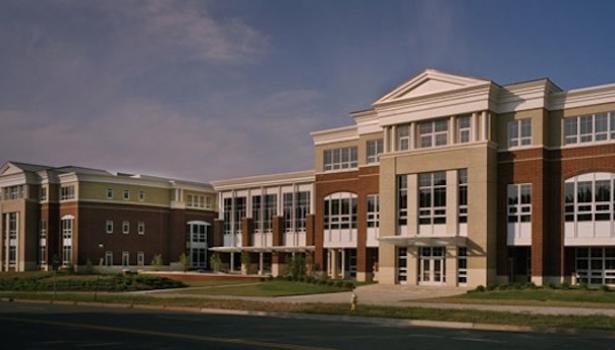A Look into TC’s Sustainability
Sophie Moniz
TC Williams High School advertises themselves as an environmentally green school, with automatic sinks in the bathrooms, using little to no water for flushing toilets, and a green roof containing a water cistern to reuse rainwater.
The Leadership in Energy and Environmental Design (LEED) rating system scores TC as Gold, the second highest rating within the LEED system, in energy efficiency and sustainability. However, there are still some aspects at TC that could be changed to make the building more sustainable.

Photo Courtesy of Dominion Energy
All of Alexandria is powered by Dominion Energy, an energy and power company that supplies electricity and natural gas to Virginia, North Carolina, parts of West Virginia, Ohio, and Pennsylvania. Dominion is the fourth largest gas and electric utilities company in the United States as of 2017. It has pledged to use more renewable energy, such as wind, for Virginia and North Carolina customers, with a projected amount of up to 2,000 megawatts of wind electricity.

Courtesy of U.S. Green Building Council
TC did not receive high scores in the Sustainable Sites category, the Energy & Atmosphere category, the Materials & Resources category, and the Indoor Environmental Quality category, which contributed to it not being rated the top ranking, Platinum.
Although it struggled on scored in these categories, TC still scored 45 out of a possible 69 points this rating system, making it a somewhat green school compared to other schools. The issue with this is that TC should not just be somewhat green, it should be 100 percent green and sustainable.
TC Williams has a water cistern that uses rainwater to flush the toilets, and the urinals in the boys’ bathrooms are waterless. Although the school is concerned about water usage, TC’s main concern is the use of LED lights, which use less energy than traditional light bulbs, and timed outdoor lights, which face inward towards the school to prevent excess light pollution. The school’s main source of energy is electricity generated from Dominion, and although the effort to switch to LED lights is progress, it is not enough to decrease energy usage and carbon emissions.
Another issue is that the school uses dozens of buses daily to bring children to school, and to minimize carbon emissions, there is a minimum distance of a 1.5 mile radius around the school for how far a student can live to have a bus pick them up. Because TC had points taken off of their LEED score from not having bicycle parking or alternative transportation, it would benefit the school to consider implementing these practices, which would further the sustainability effort.
Lead Administrator for Operations Tammy Ignacio said, “Everything in the building is environmentally friendly down to the concrete that was used to build [the school].” The school was built with sustainability in mind, however, in order to reduce its ecological footprints and create a more sustainable and environmentally-friendly lifestyle for its students, TC needs to implement more practices surrounding efficiency and conservation. The school should strive to be 100 percent sustainable, and although it is close, it should continue working until this goal is met.



